Are you feeling overwhelmed by the process of applying for disability support? You're not alone'navigating the paperwork and requirements can be daunting. In this article, we'll break down the essentials of a disability support application letter, ensuring that you express your situation clearly and effectively. So, grab a coffee, get comfortable, and let's dive into the details to help you on your journey!
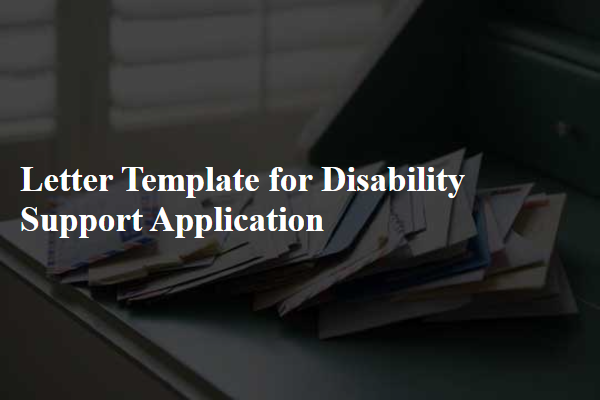
Personal Information
Your personal information, vital in disability support applications, includes full name, such as Jane Doe, residential address, which encompasses street, city, and zip code (e.g., 123 Main St, Springfield, 12345), phone number (e.g., (123) 456-7890), and email address (e.g., janedoe@email.com). Additional details may include date of birth (e.g., January 1, 1980) and Social Security number (e.g., XXX-XX-XXXX), ensuring accurate identification. This section sets the foundation for the application process, indicating eligibility and facilitating communication with support organizations, such as the Social Security Administration in the United States or local disability services.
Medical Diagnosis and Documentation
Medical documentation provides critical evidence for disability support applications, encompassing a formal diagnosis of medical conditions such as Multiple Sclerosis (MS), A.S. (Ankylosing Spondylitis), or Chronic Fatigue Syndrome (CFS). A comprehensive evaluation report from qualified healthcare professionals, like neurologists or rheumatologists, detailing symptoms, treatment history, and prognosis is essential. Disability ratings, as classified by entities such as the Social Security Administration (SSA), inform the evaluation process, impacting eligibility for assistance programs. Inclusion of specific diagnostic codes, like ICD-10 for accurate categorization of the medical condition, facilitates understanding of the severity. Relevant medical history, including treatment regimens, medications, and responses, provides further context to support claims for disability benefits, ensuring a thorough assessment by authorities.
Description of Disability Impacts
Individuals with disabilities may experience significant challenges in daily activities, including mobility limitations due to physical impairments like paralysis or arthritis. Cognitive disabilities, such as autism spectrum disorder or traumatic brain injury, can hinder communication skills and social interactions, impacting relationships and employment opportunities. Sensory impairments, like vision loss or hearing impairment, may restrict access to information and create barriers in environments like schools or workplaces. Mental health conditions, including anxiety and depression, can affect overall functioning, leading to difficulties in maintaining routines or fulfilling responsibilities. Accessibility issues in public spaces (like transportation facilities) and lack of adequate support services exacerbate these challenges, further hindering independence and quality of life.
Request for Specific Accommodations
Individuals seeking disability support often require tailored assistance to facilitate their daily activities and educational endeavors. Specific accommodations might include extended time for examinations, which allows students with cognitive impairments, such as dyslexia or ADHD, to process information at their own pace. Additionally, accessible classroom materials, such as braille textbooks for visually impaired learners or captioned videos for those with hearing loss, ensure equal participation. Furthermore, physical adaptations like wheelchair ramps in public buildings or ergonomic seating can enhance comfort and accessibility, promoting an inclusive environment. These adjustments, rooted in legal precedents like the Americans with Disabilities Act of 1990, aim to empower individuals and eliminate barriers to success.
Contact Information for Follow-up
Contact information for follow-up regarding disability support applications typically includes essential details such as the applicant's full name, which serves as an identifier, the phone number (often a mobile number for immediate communication), the email address (providing an alternative contact method), and the mailing address (useful for sending formal documents). It is also relevant to mention the preferred method of communication, ensuring that the process remains efficient and accessible. Additional considerations might involve specifying times for availability, particularly for phone calls, to facilitate timely follow-ups by support staff.
Letter Template For Disability Support Application Samples
Letter template of disability support application for housing accommodations.
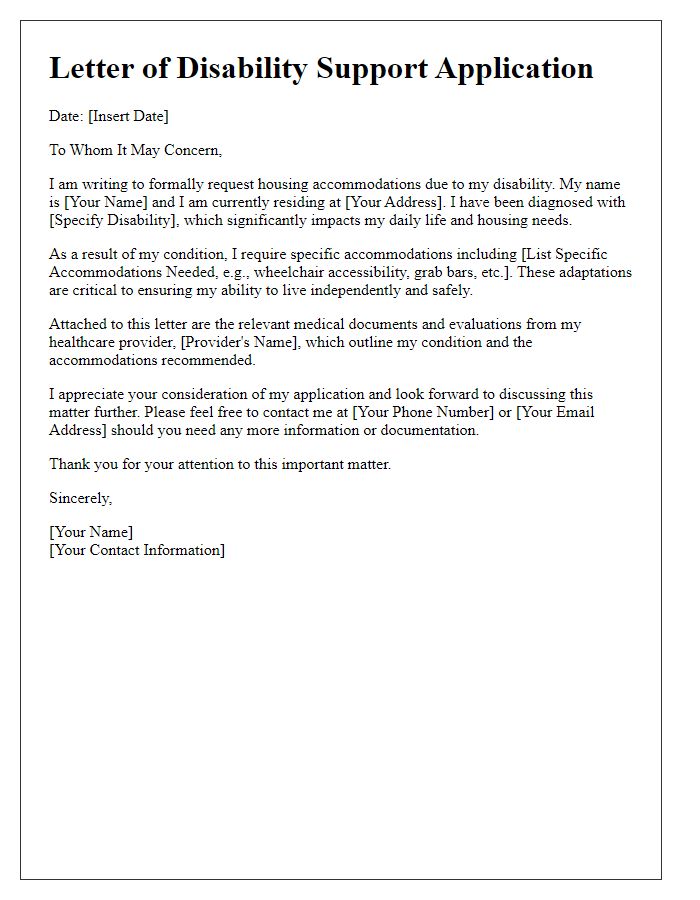
Letter template of disability support application for educational resources.
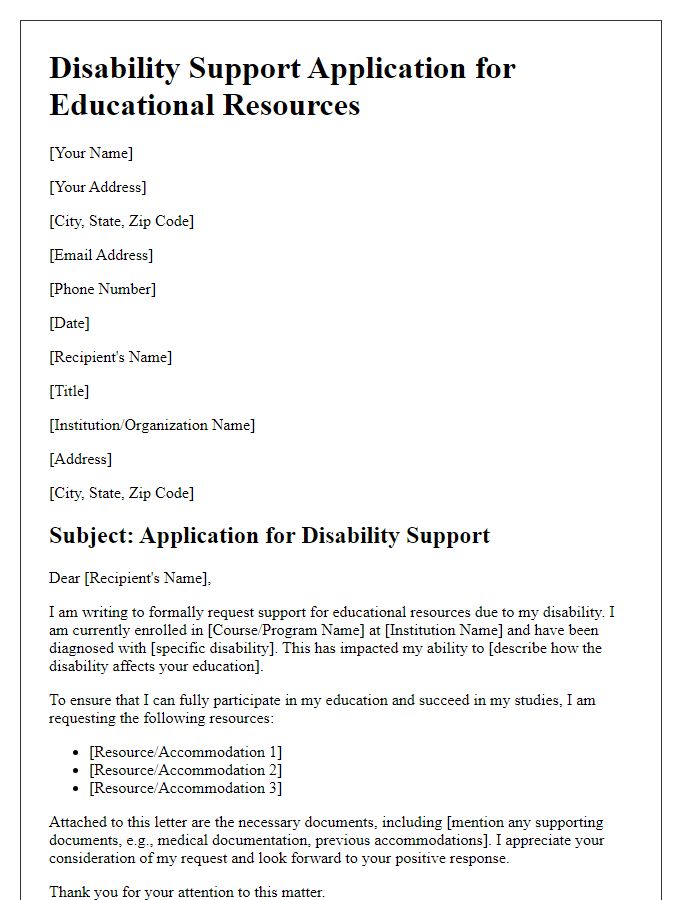
Letter template of disability support application for employment support services.
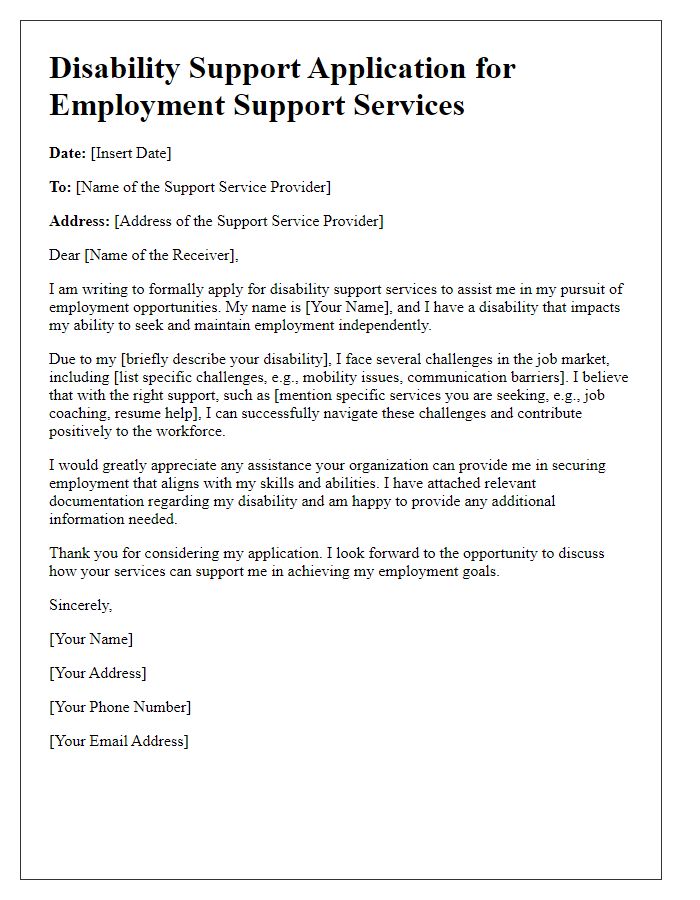
Letter template of disability support application for therapy and rehabilitation funding.
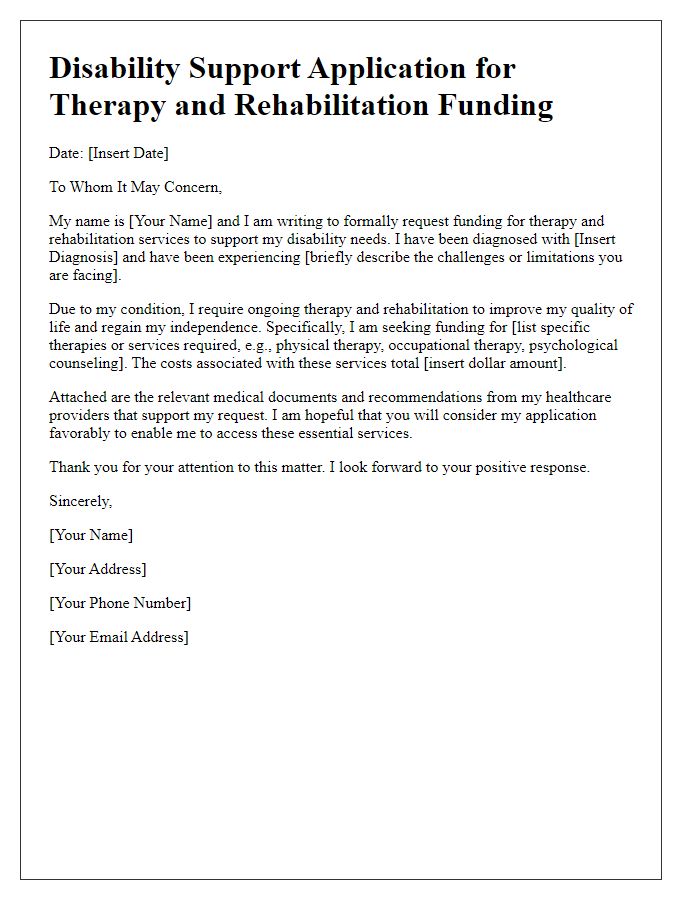
Letter template of disability support application for family caregiver support.
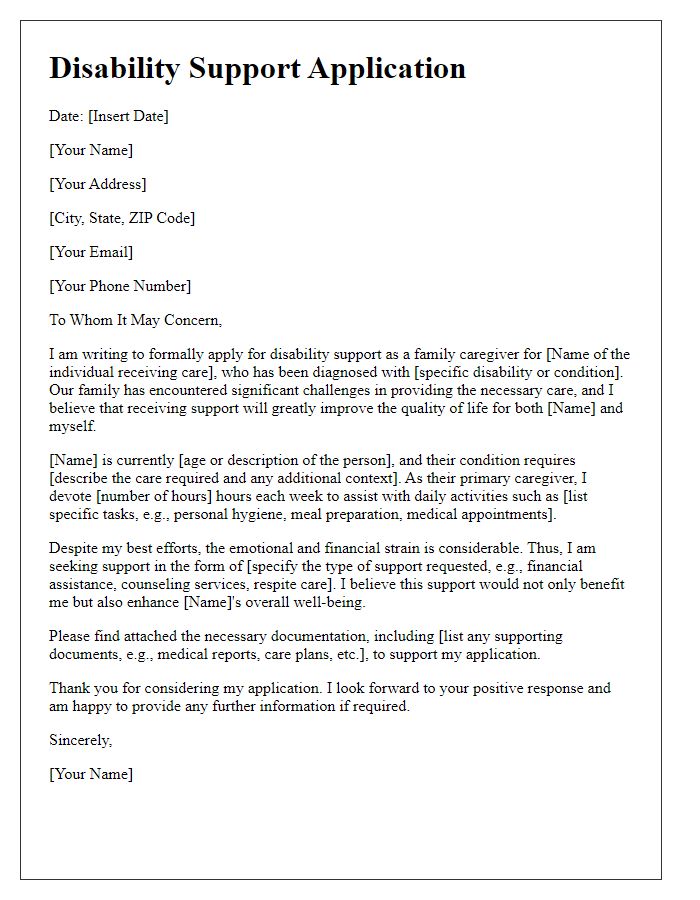

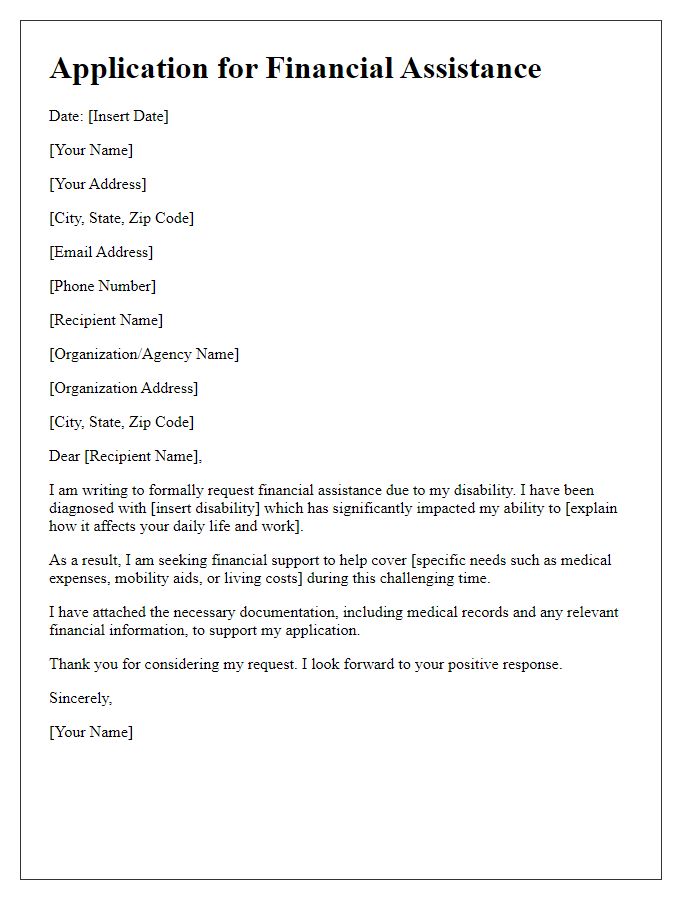

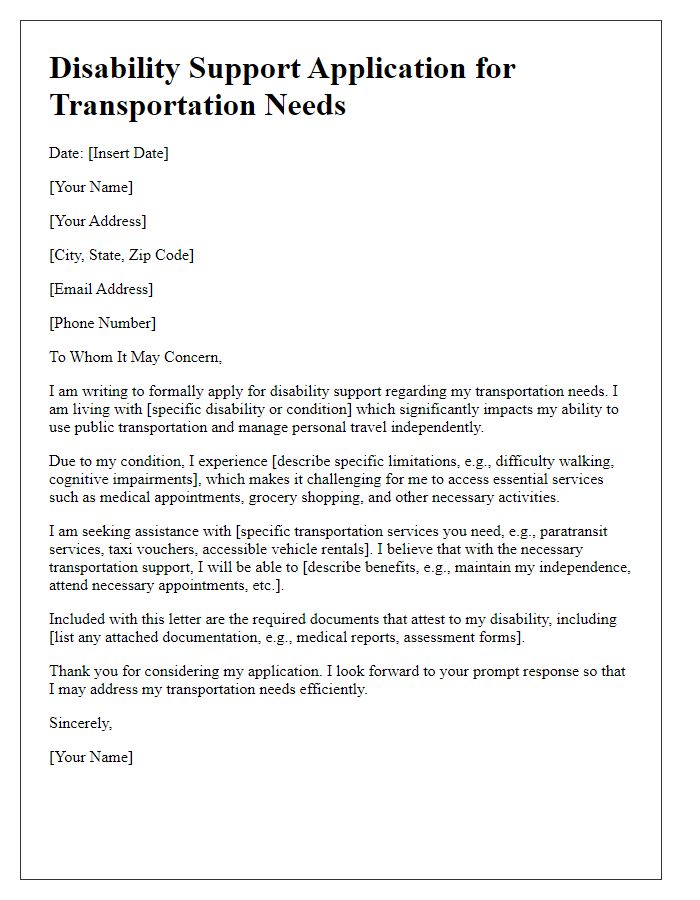
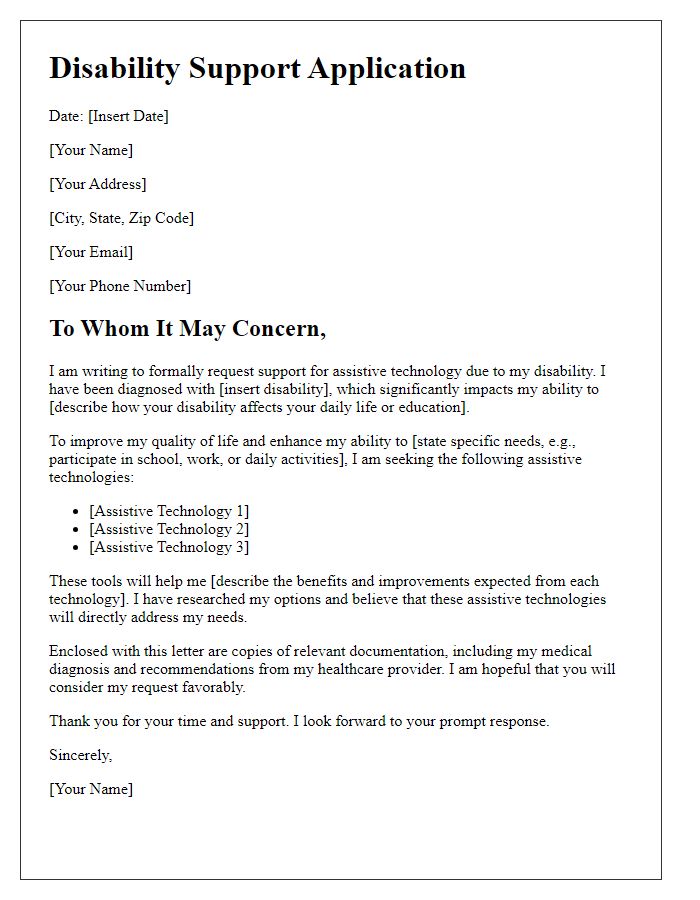
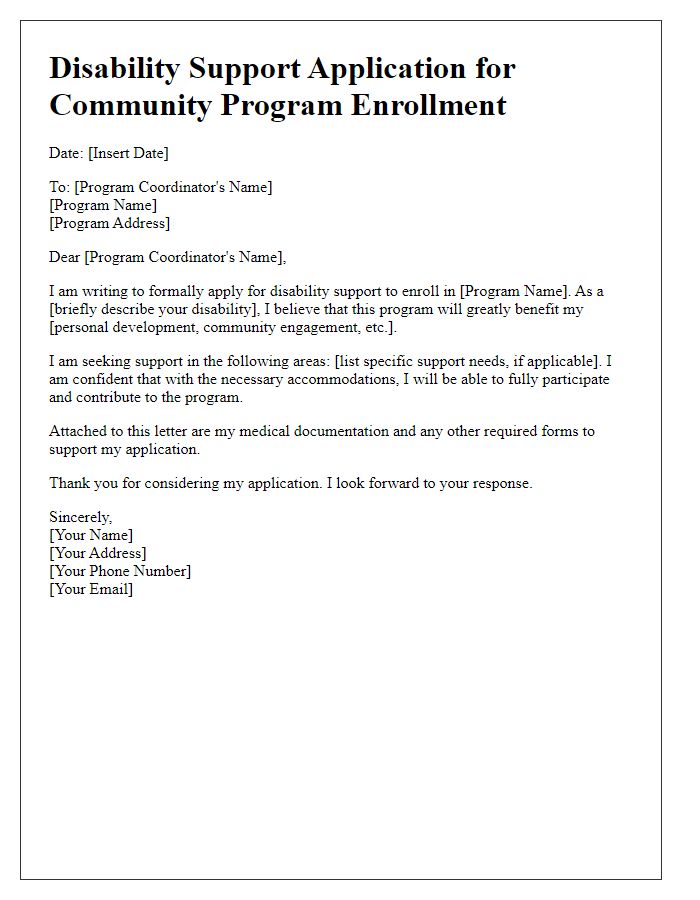





Comments